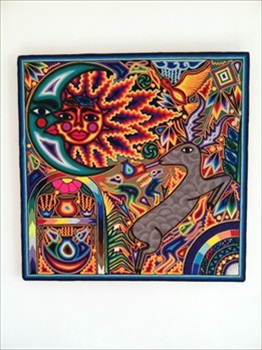
Last time we looked at some basic practices for engaging consciousness. Let’s up the ante a bit, exploring some more advanced practices for engaging consciousness, lighting a more ardent fire in the hearth of creativity, delving headlong into some of the deeper pools of awareness.
Engage in fasts of various sorts, removing certain objects or activities from your routine for a pre determined length of time. For example, you can do a food and water fast for a 24-hour period, experiencing what it is like to not get your basic caloric needs met for the day. Or you can engage in a media fast, experiencing your minds craving for information and entertainment by avoiding all newspapers, magazines, television programs, movies, and internet usage. Or take a vow of silence for a day or two, and see how you react to restrictions on your own verbal expression. Be realistic about what you can and cannot do, choose a length of time, then commit. By creating holes in your normal activity, and watching how your sensations, thoughts, and emotions change as a result, fasts allow you rare glimpses of your own umbrella awareness at work. Like an archaeologist removing the dirt and debris covering the foundations of an ancient ruin, fasts uncover what is always there but which we’re normally too distracted to notice.
Like fasting, regular meditation similarly affects the mind. As one meditation master once put it, meditation is to the mind what enemas are to the bowels. Far from being a sedative, it flushes your mind of unnecessary and distracting mental chatter. When practiced on a regular basis, it provides space, clarity, and contrast from your daily life that helps you to see the working of consciousness directly. In Buddhism, for example, meditation isn’t used to move up into some celestial realm, but to descend into the substrate of reality itself, the unborn, unchanging, unceasing ground of awareness that underlies everything. Regular meditation allows people to tap into the primordial source of creativity, and to have clarity throughout the more active portions of the creative process.
A close companion of meditation, and often used in conjunction with meditation and other practices are breathing exercises, which bring awareness to our most basic, ongoing exchange with the world around us. By either increasing the rate of our respirations or slowing them down, we alter consciousness itself. Furthermore, by simply noticing our breath we can begin to use it as a tool for expanded awareness. With the breath as a focal object, when we inhale, we can circulate both the breath and our awareness throughout our body, bringing attention to places in our body—the back of our knees for example, or the lobes of our ears—that usually go unnoticed. Breathing out, we rejoin both our breath and our awareness with the world at large.
Older still, as early humans forged for viable food stuffs, they discovered, quite by accident, that certain psychoactive substances have the capacity to alter consciousness directly, their molecules interacting in ways that changed their perceptions of themselves and their relation to the world that surrounded them. These unique substances have not only been one of the driving forces underlying early art, religious experiences, and human innovation, some speculate they played a vital role in the emergence and reshaping of consciousness itself.
Psychoactive substances are not to be taken lightly. In contrast to all the other practices I’ve mentioned thus far, these substances should only be used with great humility and even greater restraint. When used sparingly, they make valuable signposts along the road to wisdom and ever deepening creative insights. When used in excess, they can destroy the road altogether.
Austin Hill Shaw is a creativity expert, author, writer, architectural designer, and mapmaker of creativity across art, science, and religion. He specializes in helping others tap into and utilize the creative life force in everything they do. He can be reached at austin@austinhillshaw.com.